The Cortical Representation of Body Part Concepts


Stephen Mazurchuk
B8
Background
Natural Categories in Semantics
Existence of body-schemas proposed
Distinct processing of animate and inanimate objects proposed
"Impairment of auditory comprehension for body part names, but not for object names"
1911
1940
1966
Goodglass, H., Klein, B., Carey, P. & Jones, K. Specific Semantic Word Categories in Aphasia. Cortex 2, 74–89 (1966).
Head, H. & Holmes, G. Sensory Disturbances from Cerebral Lesions. Brain 34, 102–254 (1911).
1984
Category specific impairment following HSV infection
Suzuki, K., Yamadori, A. & Fuji, T. Category-specific comprehension deficit restricted to body parts. Neurocase 3, 193–200 (1997).
Warrington, E. K., & Shallice, T. Category specific semantic impairment. Brain, 107, 829-854 (1984).
Nielsen, J. M. Agnosia, Apraxia, Aphasia: Their Value in Cerebral Localization. 2d ed. completely rev ed., Hafner Pub (1962).
Category-specific deficit and category-specific sparing of body part comprehension reported
1997/1998
2002
Shelton, J. R., Fouch, E. & Caramazza, A. The Selective Sparing of Body Part Knowledge: A Case Study. Neurocase 4, 339–351 (1998)
Coslett, H. B., Saffran, E. M. & Schwoebel, J. Knowledge of the human body. Neurology 59, 357–363 (2002).
Human body knowledge proposed as a distinct semantic domain
B8
Background
Goodglass, H., Klein, B., Carey, P. & Jones, K. Specific Semantic Word Categories in Aphasia. Cortex 2, 74–89 (1966).
Suzuki, K., Yamadori, A. & Fuji, T. Category-specific comprehension deficit restricted to body parts. Neurocase 3, 193–200 (1997).
Warrington, E. K., & Shallice, T. Category specific semantic impairment. Brain, 107, 829-854 (1984).
Nielsen, J. M. Agnosia, Apraxia, Aphasia: Their Value in Cerebral Localization. 2d ed. completely rev ed., Hafner Pub (1962).
Shelton, J. R., Fouch, E. & Caramazza, A. The Selective Sparing of Body Part Knowledge: A Case Study. Neurocase 4, 339–351 (1998)
Coslett, H. B., Saffran, E. M. & Schwoebel, J. Knowledge of the human body. Neurology 59, 357–363 (2002).
Research Gap:
- We are interested in where body part concepts are processed
- Little is known about how distinct the neural representations of body-part concepts are from other "natural categories"
Existence of body-schemas proposed
Distinct processing of animate and inanimate objects proposed
"Impairment of auditory comprehension for body part names, but not for object names"
1911
1940
1966
1984
Category specific impairment following HSV infection
Category-specific deficit and category-specific sparing of body part comprehension reported
1997/1998
2002
Human body knowledge proposed as a distinct semantic domain
B8
Head, H. & Holmes, G. Sensory Disturbances from Cerebral Lesions. Brain 34, 102–254 (1911).
Methods
Task
Data processing
Analysis
- Subjects asked to rate familiarity with concept
- Each of the 50 concepts from 4 categories (200 total) presented 6 times in a pseudo-randomized order
- 19 subjects included in study
- BOLD time series projected to the surface for analysis
Univariate:
- Group level analsis done with FSL's PALM
- The reported results are familwise error corrected with a cluster-forming threshold of z > 2.3 (p < .01), and a signifigance level of \(\alpha\) < .01
Multivariate:
- Each word was regressed at every surface vertex
- tSNE clustering analysis was performed on the average neural RDM for a given parcel
[Animals, Manipulable Artifacts, Plants and Food, Body Parts]
B8
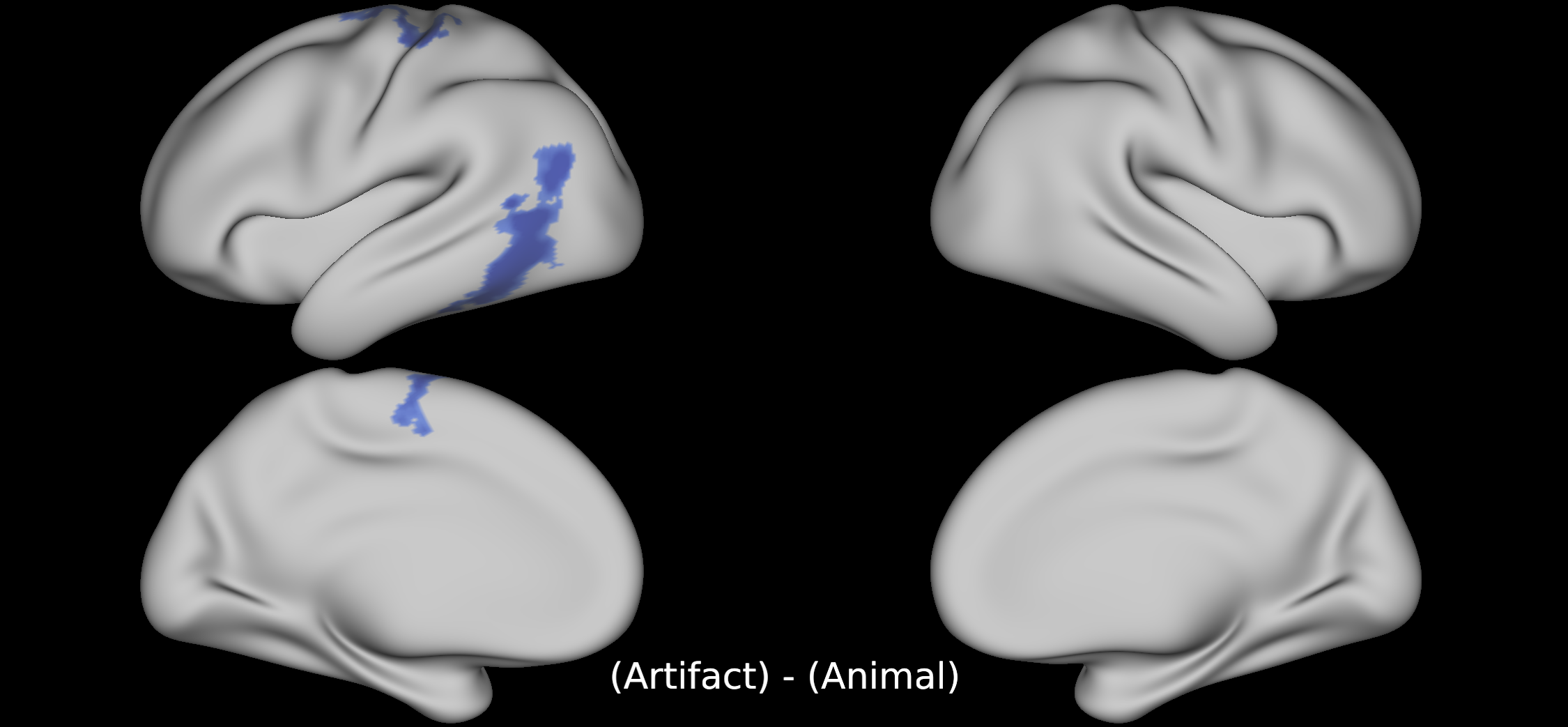
Artifact - Animal
Toggle Buttons
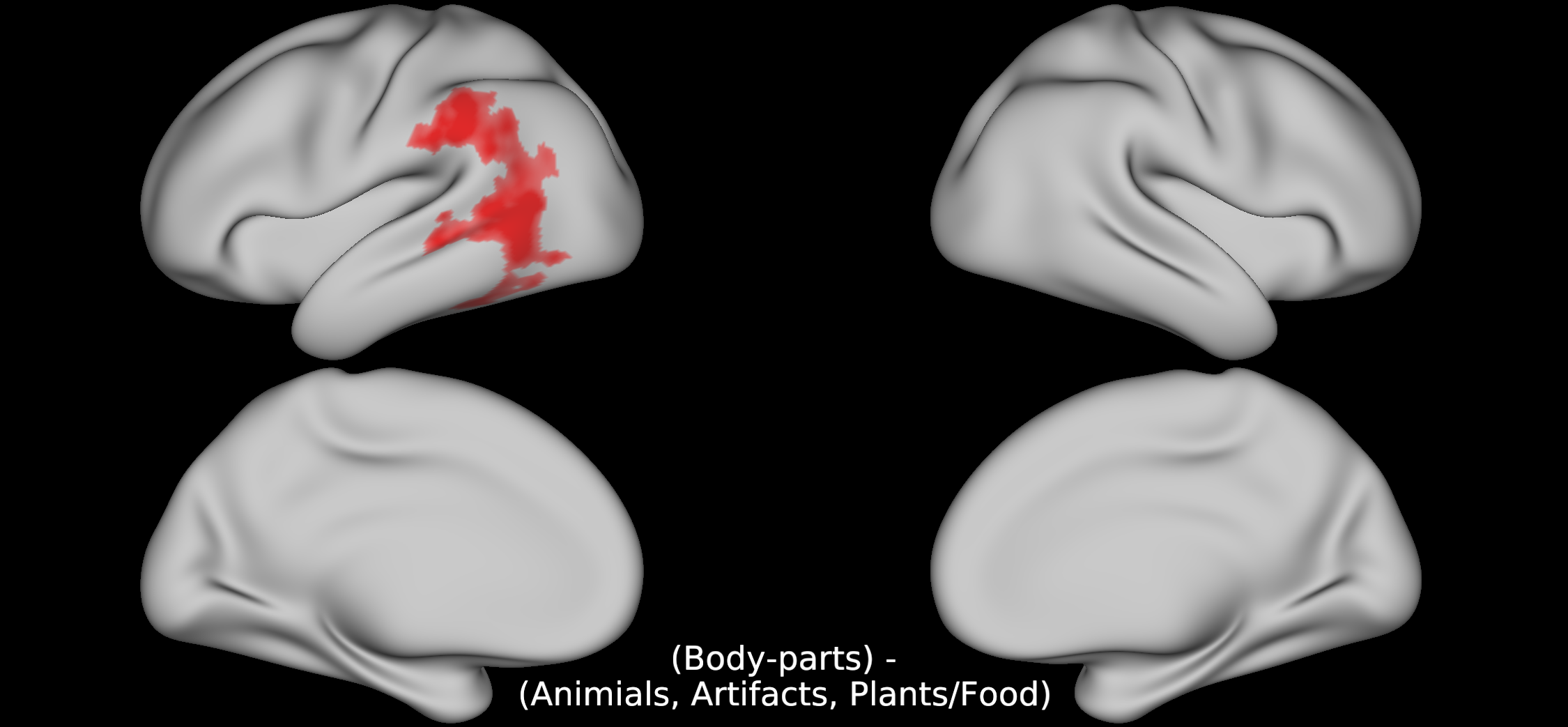
Body Parts
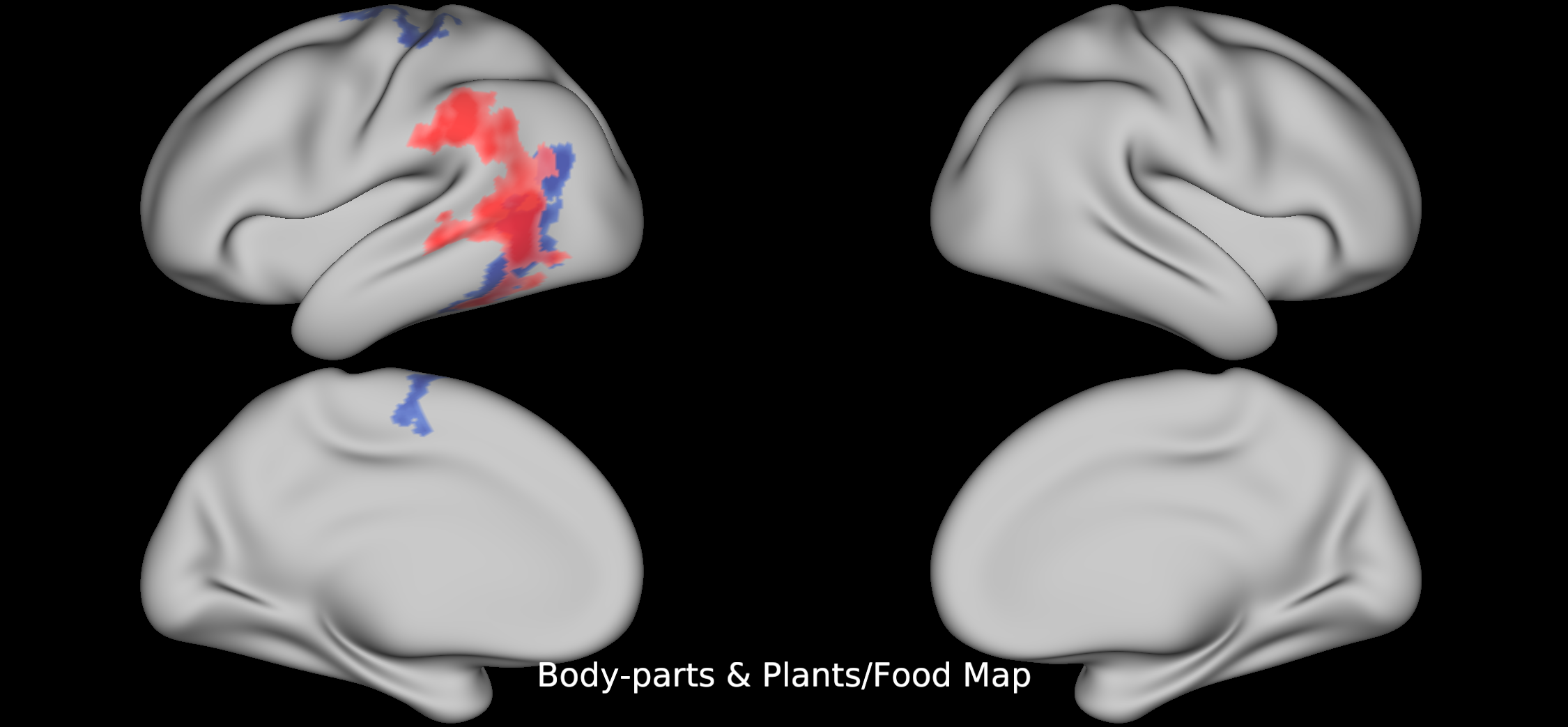
Body Parts & Artifacts
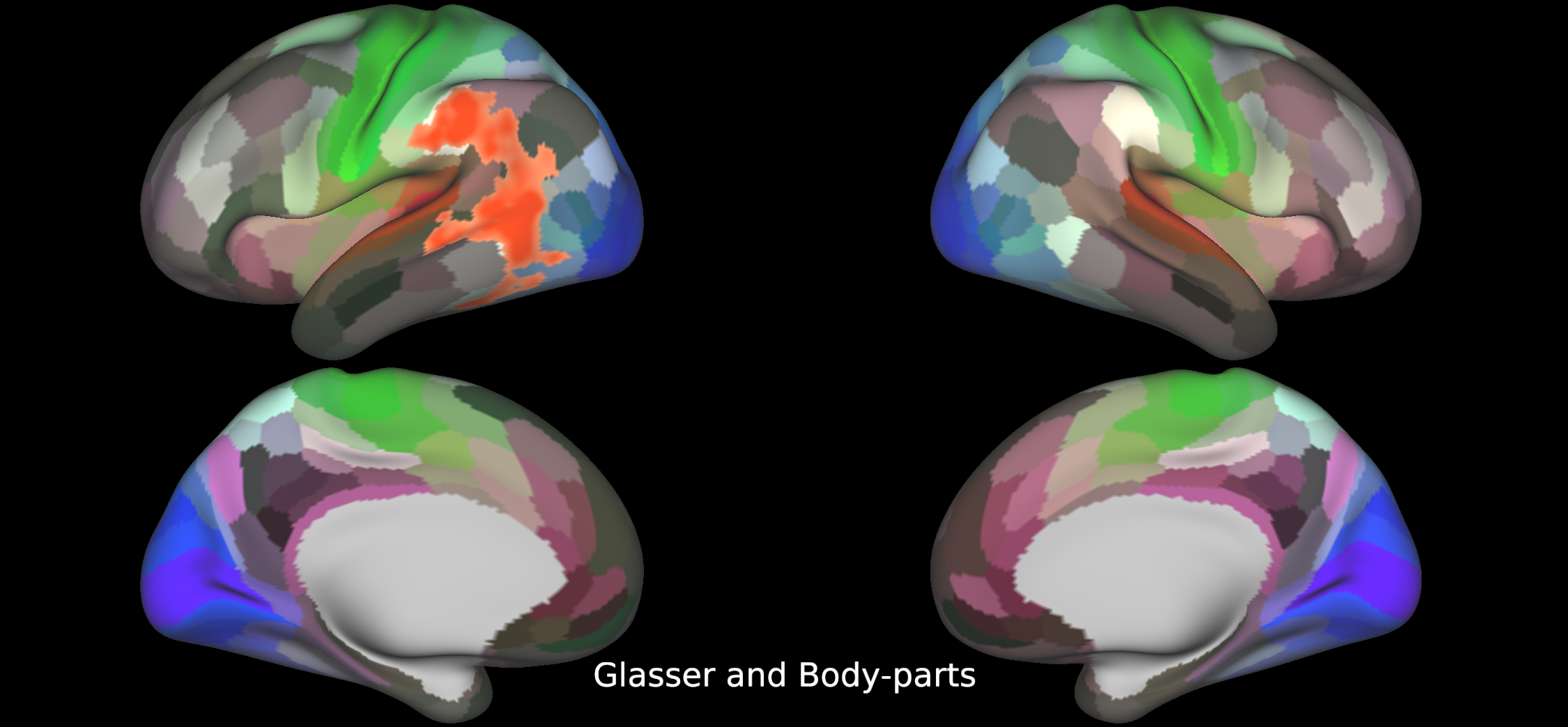
Body Parts & Glasser
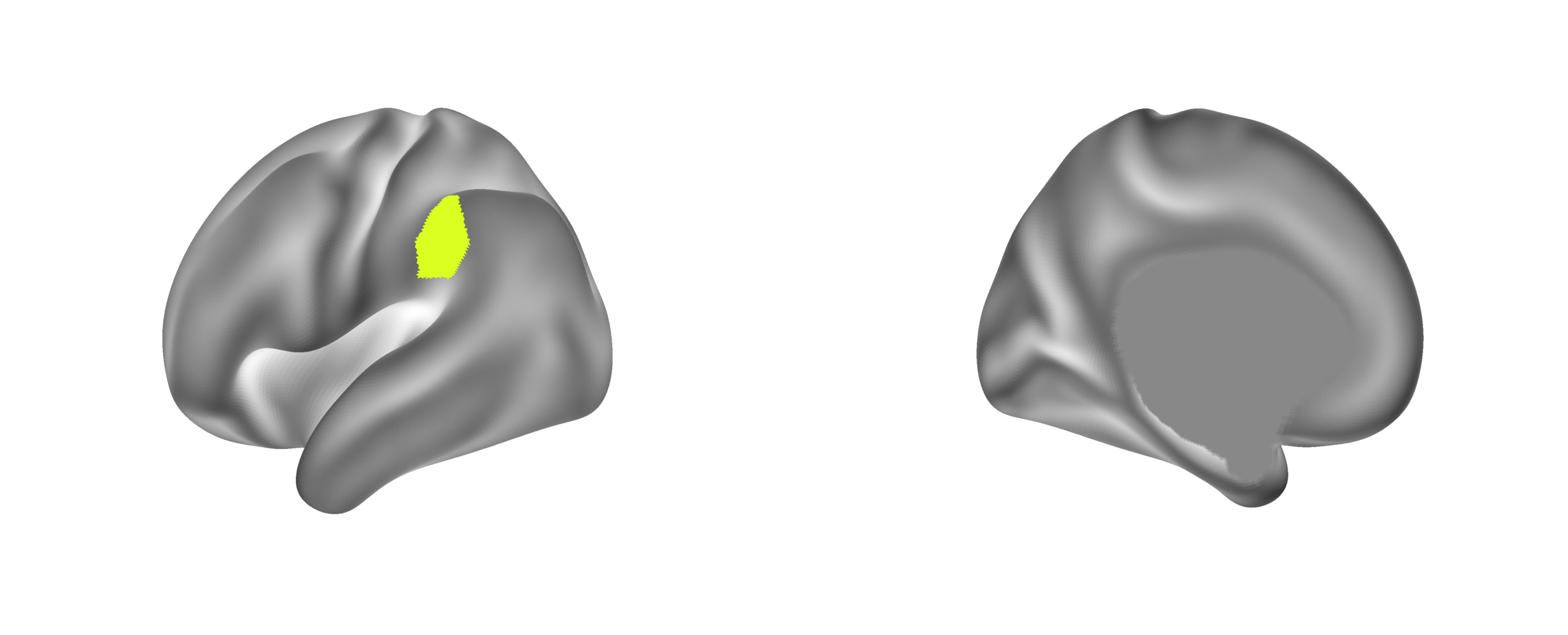



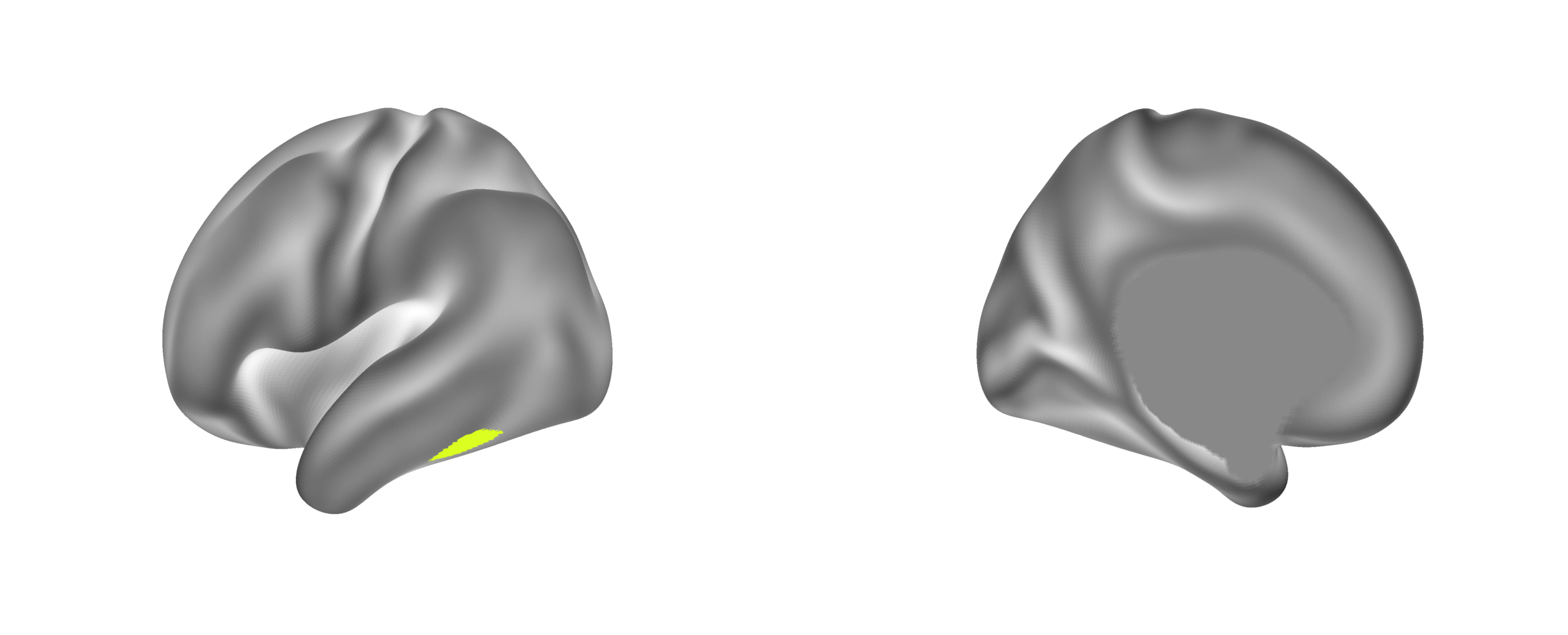

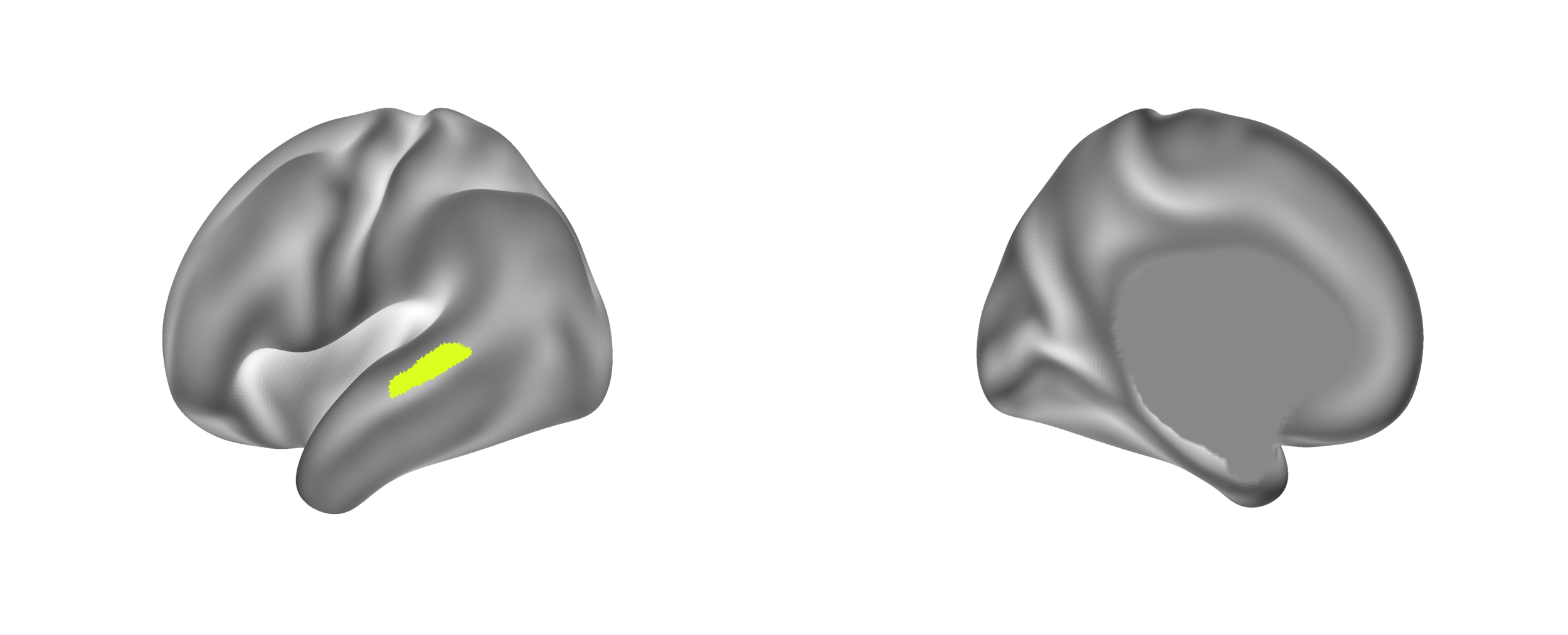

SMG
pSTS
pMTG
pOTS
B8
Results

(Artifact) - (Animal)
Body Parts -
(Artifact, Animals, Plants/Food)
Body Parts & Artifacts
Body Parts & Glasser
Key Findings
- Body part concepts (i.e. declarative lexical-semantic knowledge about body parts):
- Elicit a stronger activation in left supramarginal gyrus (SMG), posterior superior tempral sulcus (pSTS), posterior middle temperal gyrus (pMTG) , and posterior Ocipital Temporal Sulcus (pOTS) relative to three other concrete object categories
- Show a distinctive activation profile in several regions associated with semantic processing
B8

-
- Activated areas similar to areas previously shown to reflect manipulability ratings for noun concepts
Fernandino, L. et al. Concept Representation Reflects Multimodal Abstraction: A Framework for Embodied Semantics. Cereb Cortex 26, 2018–2034 (2016)
Conclusions
- Body part concepts appear to have distinct localization and distinctive neural activation patterns within the general semantic network
- Further analysis is needed to determine if experiential models of semantics can account for these findings
B8

Searchlight RSA t-scores between neural activation patterns and a 65 dimensional experiential model
B8
Thanks!
SNL 2021 Slides
By smazurchuk
SNL 2021 Slides
- 197



